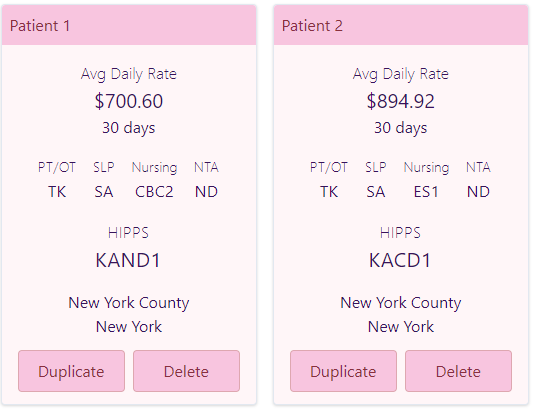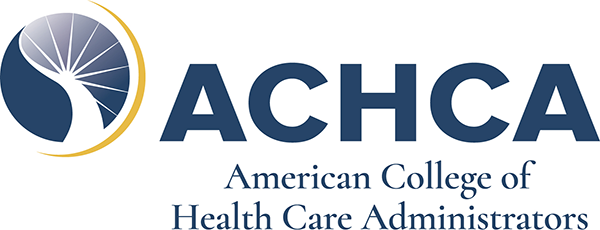PDPM Isolation, Quarantine, Skilling, COVID-19, and ICD-10
PDPM Isolation, Quarantine, Skilling, COVID-19, and ICD-10
Top 6 Things to Know
HHI is receiving ongoing inquiries on the MDS Coding qualifiers for Isolation and Quarantine. Although it may seem simple, there is a difference between Isolation and Quarantine.
- Isolation is for patients with symptoms and or positive tests.
- Quarantine is for patients exposed but exhibits no symptoms.
According to the CDC, isolation is for people who are ill, while quarantine applies to people who have been in the presence of a disease but have not necessarily become sick themselves. Per the CDC,
"Isolation separates sick people with a contagious disease from people who are not sick."
- Isolation (Z29.0) and COVID-19 (UO7.1)
Coding isolation for a patient with an active infectious disease places them into an ES1 nursing category under both Medicare Part A and certain Medicaid Case Mix states.
To properly code isolation on the MDS, the patient requires:
- Isolation for a minimum of one day. (Although the patient may be isolated for longer than one day.)
- MD Orders for isolation.
- Active Infectious disease ICD-10 coded:
- On the UB-04 and
- On the MDS (Section O. and I.)
- All treatments rendered in the patient’s room with documentation to support said services are provided at bedside.
- Isolation cannot be coded if the patient is being “co-horted”, meaning rooming with another patient.
Skilled (Medicare Part A) Observation and Assessment is Indicated when there is a reasonable probability or possibility for complications or the potential for further acute episodes.
This references conditions where there is a “reasonable probability or possibility” for:
- Complications
- Potential for further acute episodes
- Need to identify and evaluate the need for modification of treatment
- Evaluation of initiation of additional medical procedures
Daily observations and assessments include but are not limited to, fever, dehydration, septicemia, pneumonia, nutritional risk, weight loss, blood sugar control, impaired cognition, mood, and behavior conditions.
Skilled observation is required until the treatment regimen is essentially stabilized, and the patient is no longer at risk for medical complications.
- Quarantine and Skilled Care
Although a quarantined patient may not have symptoms, the mere fact the patient was potentially exposed to COVID-19 warrants daily skilled nursing to observe and assess for signs and symptoms of COVID-19.
Observation and Assessment references conditions where there is a “reasonable probability or possibility” for the nurse to:
- Evaluate the patient’s condition i.e., observe and assess for fever, body aches, loss of appetite,
- Identify acute episodes, and
- Identify the need for treatment (modifications).
- Initiate treatment changes,
In addition, the nurse may provide observation and assessment of signs and symptoms related to:
- Dehydration,
- Septicemia,
- Pneumonia,
- Nutritional risk,
- Weight loss,
- Blood sugar control,
- Impaired cognition and
- Mood and behavior conditions.
Nurses need to document the defined assessment on a daily basis. This may include neurological, respiratory, cardiac, circulatory, pain/sensation, nutritional, gastrointestinal, genitourinary, musculoskeletal, and skin assessments.
In these situations, the Nurse may write:
“This patient requires daily skilled nursing observation and assessment of signs and symptoms related to COVID-19.”
Skilled observation is required until the treatment regimen is essentially stabilized.
- Reimbursement Medicare Part A Skilled Care
The difference in reimbursement for accurately coding isolation for a patient with active infectious disease is depicted below.
Rural, VT

$134.74 per day
x 100 days =
$13,474

*Courtesy of Hopforce PDPM Calculator: https://pdpm-calc.com/
Urban, NY

$194.32 per day
x 100 days =
$19,432

- Reimbursement Medicaid Case Mix – D.C.
In D.C., the coding of isolation also impacts the Medicaid Case Mix Index. An ES1 Level for Isolation yields 2.22 CMI.
Conservatively, the CMI Impact Isolation COVID-19 =
ES1 versus CB2 =
2.22 - .95 =
1.27 increase
When identifying patients who are isolated and quarantined, it is imperative to assess if the condition warrants skilled care.
Currently, each state uses its own Medicaid reimbursement system. Multiple states are collecting data in preparation for applying the PDPM model for usage. (See Map)
- ICD-10 Active Infectious Disease i.e., COVID-19
- The ICD-10-CM Diagnosis Code is U07.1, Virus Identified
- U07.1 is a billable/specific ICD-10-CM code that can be used to indicate a diagnosis for reimbursement purposes.
- ICD-10-CM U07.1 is a new 2021 ICD-10-CM code that became effective on October 1, 2020.
- This is the American ICD-10-CM version of U07.1 - other international versions of ICD-10 U07.1 may differ.
ICD-10-CM U07.1 is grouped within Diagnostic Related Group(s) (MS-DRG v38.0):
- 177 Respiratory infections and inflammations with mcc
- 178 Respiratory infections and inflammations with cc
- 179 Respiratory infections and inflammations without cc/mcc
- 791 Prematurity with major problems
- 793 Full term neonate with major problems
- 974 HIV with major related condition with mcc
- 975 HIV with major related condition with cc
- 976 HIV with major related condition without cc/mcc
- The ICD-10-CM Diagnosis Code is U07.2, Virus NOT Identified
- Clinically-epidemiologically diagnosed
- Probable COVID-19
- Suspected COVID-19
https://www.who.int/classifications/icd/icd10updates/en/
9.29.2020 ICD-10 Update COVID-19
- A set of additional categories has been agreed to be able to document or flag conditions that occur in the context of COVID-19.
- Both, 3 character and 4-character codes have been defined to respond to the different levels of coding depth that is in place in different countries
Personal history of COVID-19
- U08.9 Personal history of COVID-19, unspecified
- This optional code is used to record an earlier episode of COVID-19, confirmed or probable that influences the person’s health status, and the person no longer suffers from COVID-19. This code should not be used for primary mortality tabulation.
Post COVID-19 condition
- U09.9 Post COVID-19 condition, unspecified
- This optional code serves to allow the establishment of a link with COVID-19. This code is not to be used in cases that still are presenting COVID-19.
Multisystem inflammatory syndrome associated with COVID-19
- U10.9 Multisystem inflammatory syndrome associated with COVID-19, unspecified
|
Cytokine storm |
Temporally associated with COVID-19 |
|
Pediatric Inflammatory Multisystem Syndrome (PIMS) Multisystem Inflammatory Syndrome in Children (MIS-C) |
- Excludes: Mucocutaneous lymph node syndrome [Kawasaki] (M30.3)
- HHI Recommendations
- Educate staff on Isolation versus Quarantine.
- Educate staff on Skilled Coverage Criteria.
- Educate staff on ICD-10 Coding.
- Perform ongoing and retroactive medical record reviews. All patients should be reviewed immediately. It may not be possible to retroactively correct certain errors.
- Download Core Components.

Harmony Healthcare International, Inc. | 430 Boston Street, Suite 104, Topsfield, MA 01983 • Tel: 1.800.530.4413 | www.harmony-healthcare.com
Copyright © 2020 All Rights Reserved



